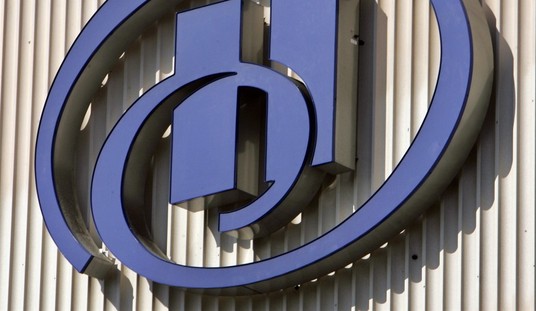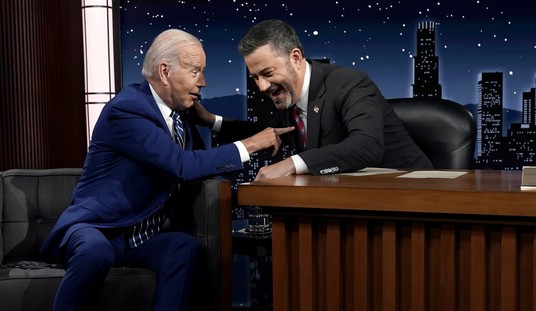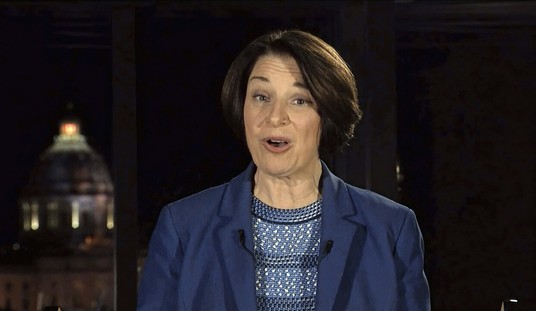I wish he had been more specific about what “very, very bad” means and how many plans are in trouble because of this, but his previous criticisms of O-Care and Healthcare.gov have been accurate so there’s little reason to doubt that this one is too. On the contrary, this is consistent with the dog that didn’t bark in the HHS enrollment data released this morning. If the composition of the risk pools looked good, with oodles of “young invincibles” signing up to subsidize people with preexisting conditions, Obama and Sebelius would be shouting it from the mountaintops. The progressive goalposts, always capable of quickly shifting, would move instantly from “how many people have signed up?” to “how’s the demographic mix of the risk pools?”. That’s what’s really important, don’tcha know.
The answer to each question in turn: Not enough people have signed up, and per Laszewski, not enough of the ones who have are the healthy youngsters insurers desperately need.
Older clients, aged above 40, comprise 60 percent of the new Obamacare customers at one of his client health-care companies, Laszewski told The Daily Caller.
The skew is “very, very bad,” said Laszewski, who is president of Health Policy and Strategy Associates, Inc…
Precise predictions are impossible because the Obamacare system is so new, and executives do expect a surge of people to join in the next two weeks, Laszewski said.
But the apparent lack of young people “is a very poor omen,” Laszewski said.
Not the first time we’ve heard that the risk pools are older and grayer than HHS hoped. The October data for some plans showed the average age of enrollees climbing above 50. In Connecticut and Kentucky, the biggest segment of enrollees came from the 55+ group; in California, which operates the largest state exchange, 56 percent of October enrollees were older than 45 and, of that group, a majority were over age 55. Just 23 percent came from the coveted 18-34 demographic. But all of that was expected: It stands to reason that the first rush of sign-ups after the exchanges launched would come from older, sicker people who are desperate to get coverage. The significance of Laszewski’s comments today is that he seems to believe that the skew has persisted, at least in some segments, well into December. Again, though, I wish he’d given us numbers. According to HHS, the exchanges will be fine if 40 percent of enrollees are young and healthy. Laszewski told the Daily Caller that 60 percent of new enrollees in some plans are older than 40. That … doesn’t sound terribly skewed, frankly. And since it’s the lazy and/or distracted youngsters who are expected to finally sign up in the last enrollment crunch before Christmas, there’s reason to think that the risk pools might be even more balanced by New Year’s. It would, presumably, be very easy for HHS to clue us in on all this, but as I say, they’re keeping their mouths shut. Which almost certainly means it’s bad news, i.e. Laszewski’s right.
It’s not just the age mix that’s confounded predictions. Patrick Brennan notes a curious trend in the HHS data released today:
About one-fourth of the people who have entered their income information on their applications were deemed eligible for subsidies on the exchanges (about 900,000 out of about 3.6 million), which is lower than the number we saw in October alone and remains really far from what was projected. The CBO projected that just 1 million out of the 7 million people to enroll in the exchanges in the first year would be ineligible for subsidies, so the ratio is way off from what was expected (15–75 vs. 75–25). I had some thoughts on that surprising fact a month ago, and I’ll add a couple now: Unsubsidized customers (basically, those above the national median income) are generally savvier and more likely to have the resources to enroll and make their payments ahead of time, so maybe this is understandable and doesn’t say anything about who will eventually enroll. On the other hand, it may demonstrate that the people to whom insurance was supposed to be expanded — the uninsured, who tend to be low-income and not well educated — aren’t getting to the exchanges at all, and covering them will be a much longer term project.
CBO made a rational assumption: If you expand coverage to people irrespective of preexisting conditions and subsidize those with smaller incomes to make their premiums more affordable, it stands to reason that lower-income people who’d been priced out before will leap at the chance to buy insurance once it’s available in October. Right? They’re the “winners” from the law. Uncle Sam’s helping them out with a little welfare towards their health insurance. Why not avail themselves? What we’re seeing instead is higher-income people who don’t qualify for subsidies enrolling. Maybe that’s because they, more so than lower-income folks, used to have insurance and were recently canceled, making them desperate to get new coverage before January 1st. If you’re poor and have spent years without insurance, you might be so used to it that you don’t bother to hurry when the exchanges open. Or maybe the premiums are so high even after you discount them for subsidies that some poorer consumers still can’t afford them and are holding out for the time being. Or maybe the subsidy problem is a function of the poor demographic mix right now: The “young invincibles” who are just starting out in the labor market (if they’re lucky enough to find a job) are, I’d guess, way more likely than older middle-class people to need a little help paying their premiums. If they’re not signing up yet, then naturally the risk pool will be older and wealthier. Good news for taxpayers at the moment, in that the subsidies are flowing relatively slowly from the tap, but bad news later if the skewed risk pool persists and HHS has to bail out insurers from their adverse selection problem.
Anyway. Senate Democrats have decided that Obama’s fixes to the law aren’t nearly enough and so they’re working on their own fixes, pretty much of all which will only make the adverse selection problem worse and a bailout more likely. They’re the Smart Party, remember.








Join the conversation as a VIP Member